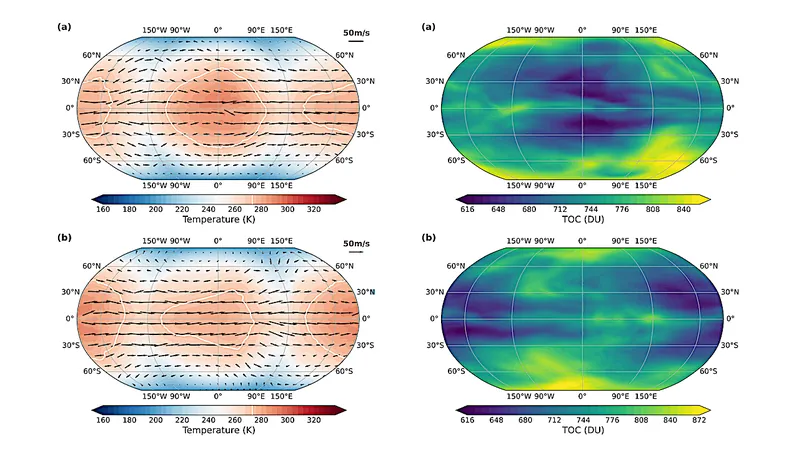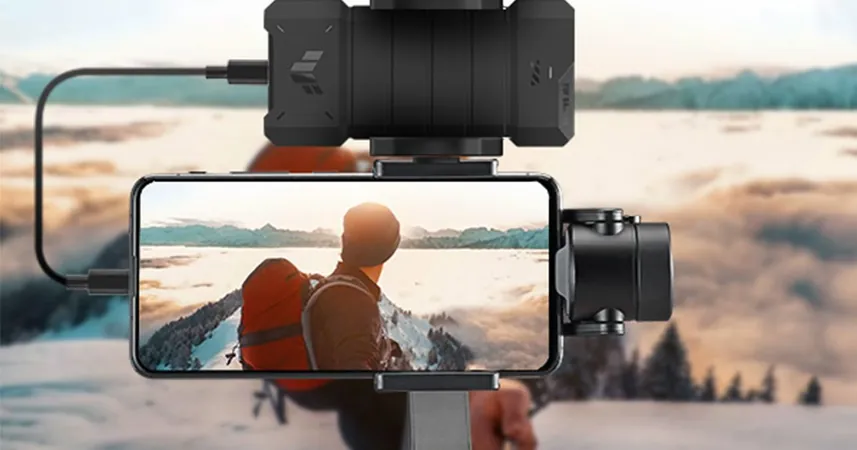
Revolutionary New Imaging Sensor from China Sets the Stage for Game-Changing Applications!
2024-11-08
Author: Nur
Introduction to the New Imaging Sensor
Chinese researchers have unveiled a groundbreaking real-time imaging sensor with the remarkable ability to quickly determine if food has spoiled, detect heavy metals in water, and much more—all at the speed of a glance! This transformative technology promises to reshape various industries by enhancing safety and health standards.
Technical Features
Published in the prestigious journal *Nature*, a team from the Beijing Institute of Technology (BIT) has introduced the world’s first hundred-channel, million-pixel hyperspectral real-time imaging device. This innovative sensor holds tremendous potential in remote sensing, healthcare, smart agriculture, and industrial automation, revolutionizing how we monitor our environment and ensure food safety.
Hyperspectral Imaging Technology
Hyperspectral imaging technology is already pivotal in fields like satellite remote sensing and deep space exploration due to its ability to capture detailed spectral information across numerous bands. However, the existing technologies are constrained by traditional designs, often resulting in cumbersome, heavy equipment that complicates integration into practical applications.
Innovative Approach by BIT Team
Recognizing these challenges, the BIT team has pioneered a novel approach using photon reuse principles. By merging expertise in materials science, electronics, optics, and computer science, they developed a compact on-chip hyperspectral imaging sensor. Remarkably lightweight—just a few grams—it delivers over 100 spectral channels and a million-pixel resolution, achieving an unprecedented 74.8% light energy utilization efficiency. This breakthrough not only improves sensitivity and accuracy but also opens up new avenues for practical use.
Applications and Testing
According to Bian Liheng, the research's first author, this sensor's versatility is astounding. It can effectively monitor water quality, assess the freshness of food, and even track vital signs such as blood oxygen and sugar levels. Such capabilities mark a significant advancement in personal health monitoring and food safety standards.
Real-World Impact
The device is already being tested in various real-world applications. The team captured high-definition spectral videos of the lunar surface and is assessing water pollution levels, while also conducting precise measurements of sugar content and potential bruising in fruits. In an industrial context, it has enabled high-precision sorting of textiles, showcasing its utility in production efficiency.
Future Perspectives
Zhang Jun, the project leader, emphasized that this research has opened a new frontier in on-chip optical studies and provides a fresh perspective for developing smart optoelectronic devices. The potential applications extend to satellite remote sensing, environmental monitoring, and smart healthcare, promising to enhance our ability to monitor and respond to health and environmental challenges like never before.
Conclusion
This innovation not only exemplifies China’s advanced capabilities in technology but also heralds a new era in the way we approach health and safety—one that could have far-reaching implications for society. Stay tuned for more updates as this exciting research continues to evolve and impact our daily lives!



 Brasil (PT)
Brasil (PT)
 Canada (EN)
Canada (EN)
 Chile (ES)
Chile (ES)
 España (ES)
España (ES)
 France (FR)
France (FR)
 Hong Kong (EN)
Hong Kong (EN)
 Italia (IT)
Italia (IT)
 日本 (JA)
日本 (JA)
 Magyarország (HU)
Magyarország (HU)
 Norge (NO)
Norge (NO)
 Polska (PL)
Polska (PL)
 Schweiz (DE)
Schweiz (DE)
 Singapore (EN)
Singapore (EN)
 Sverige (SV)
Sverige (SV)
 Suomi (FI)
Suomi (FI)
 Türkiye (TR)
Türkiye (TR)